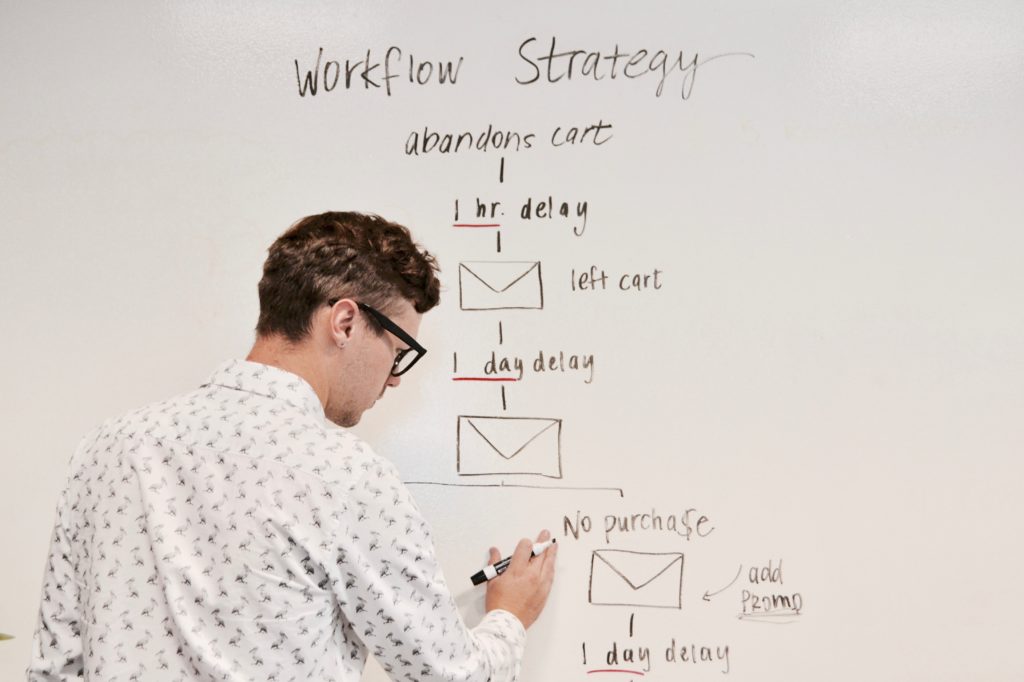Marketing, Sales, best practices
The 6 Best Sales Prospecting Email Practices You Need to Adopt to Drive Valuable Leads

Lead generation is hard.
There. We said it.
However, it isn’t impossible. Driving more valuable leads for your business takes strategy, time, patience, and consistency. A huge piece of prospecting is email, but we all know that email can be a bit bland, impersonal, and ineffective.
So here are the 6 best sales prospecting email practices that we use to drive more valuable leads.
1. Document your email strategy.
Like any good and effective sales or marketing play, you need a documented strategy for prospecting email practices. Haphazardly sending emails as one-offs can be hard to track, measure, and duplicate, and it’s difficult to figure out where something went wrong (or right).
The easiest way to document your strategy is to map out a strategy for each of your buyer personas and tailor your messaging to each. Think about how many emails you will send per prospect campaign and when you will send them. Think about the kind of content that will go into each email. Map out your entire campaign from first to final touchpoints, and outline your emails. Better yet, write them all out in advance so that you can easily replicate it or identify any messaging that may be falling flat with prospects.
You wouldn’t go into a big sales meeting without preparing, and you shouldn’t send a sales email without preparing either.
2. Do your research.
We say this a lot, and it’s because we really mean it. You cannot have an effective prospecting email strategy without first researching your prospects. That means taking the time to learn about an individual’s background, pain points, areas of interest, team size and focus, etc.
The more personal and relevant you can make your message, the more likely you are to receive a response. So take the time, put in a little extra effort, and get to researching.
3. Establish a cadence.
Timing is everything. Emailing too frequently can be just as damaging to a prospect relationship as emailing too sporadically.
Work to establish a steady cadence of contact that shows you are consistent and prioritizing your prospect without being overly pushy. Reaching out once or twice a week keeps you top of mind without overdoing it. Every industry is different, as is every prospect. Finding a cadence that works for you, your industry, and your prospects may take some trial and error, but it’s worth it in the long run.
If you have trouble remembering to send a follow-up in your cadence, consider scheduling your emails in advance so that you don’t miss a beat.
4. Use video.
Get a little personal with a personalized video. Video is a great way to make a stand-out introduction or add a little fuel to a struggling prospect relationship.
While video is a great tool to add value, it is also a great way to show a prospect how far you are willing to go for their time. Taking the time to record a video specifically for your prospect shows commitment and intentionality, two invaluable things in a business relationship.
A little camera shy? Don’t worry. We have a few tips that will help you shine on camera.
5. Add value.
We know this sounds like a no-brainer, and you may be thinking “Of course I’m adding value.”
But it’s easy to fall into a rhythm of only asking the prospect for a meeting without providing them any value. Not every email needs to ask for a meeting. Shocking, we know.
What do you have to offer the prospect? How can you help them? Does your company have a blog that would be helpful for one of their pain points? Do you have a new case study to share that they would find valuable?
Use pieces of content for a value add and skip the ask. Something as simple as “I thought you would find this article relevant” can go a long way to building rapport. When your prospect feels valued as more than a possible addition to your bottom line, you have a better chance of building a long-lasting and mutually beneficial business relationship.
6. Follow-up.
The worst thing you could do is send a prospect email, and then never follow up.
We get it, you’re busy. But so is your prospect. Following up shows your prospect that they are top-of-mind for you and gives you a better chance of getting a response. Most sales reps give up after a couple of contact touches. Not following up could mean that you are leaving money on the table.
If you need a few tips and points on the best follow-up strategies that get responses, check out our sales handbook. We’ve got you covered.
Want to create an effective prospecting email strategy but don’t know where to start? We can help.
Ready to Get Started?
Reach more prospects. Set more qualified appointments. Close more deals.
Show Me How vidREACH.io
vidREACH.io


